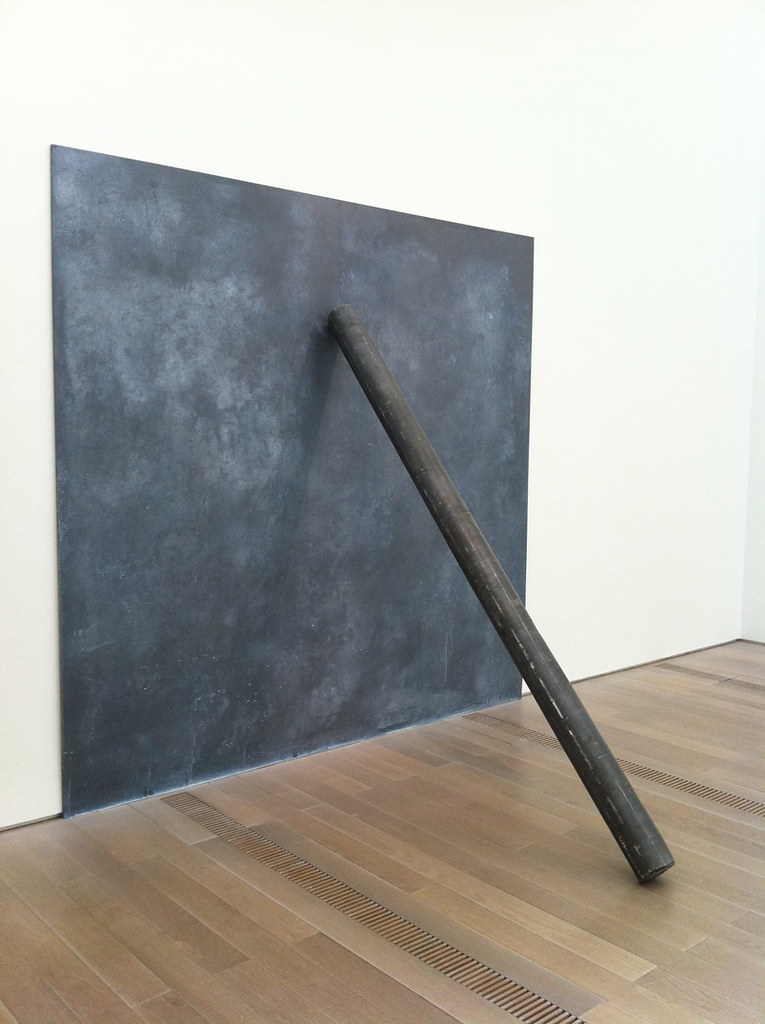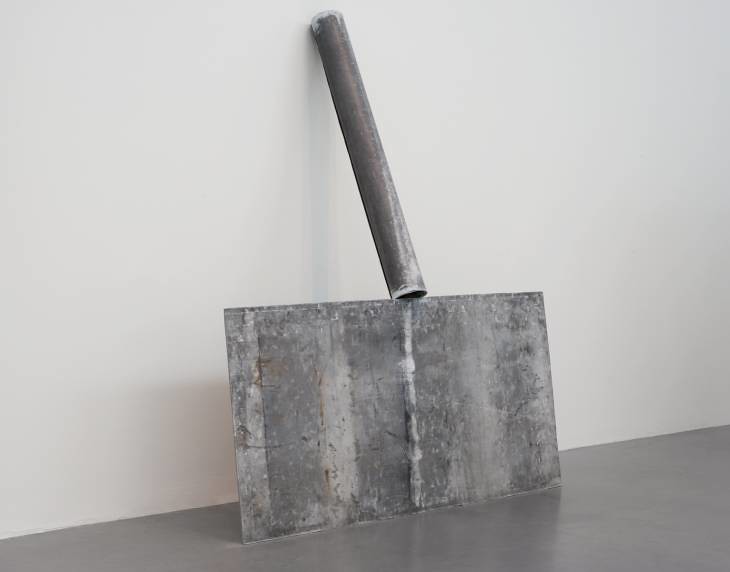"If you’re not able to translate information into meaningful activity, then you’re paralyzed by it, but if you can translate whatever the information is into terms that relate to everyday living, then it’s all useful."
- Richard Serra, on the prop pieces

"After I built the prop pieces in the late ’60s, I decided to open up the continuum of space. I wanted to remove the work from the limitations of the object, or the definition of the specific object, as articulated by Donald Judd and Minimalism, which remained predicated on a gestalt reading. Having decided that, I then had to find a way of doing it. I built a piece for Jasper Johns, about 1970, with a small plate that I was using as a template to splash against. I placed the plate in the corner and realized that it was freestanding."
"When I first started working with the prop pieces in the late 60s, you looked at the piece and couldn't enter into it. I got very discouraged that you couldn't because I wanted a more active participation with what that space would be like. Once the pieces started to take on a larger scale and started to manifest themselves in open space and started to divide rooms where you could actually walk into given areas, then it opened up the progression of the work. Once the sculpture left its object quality and took the quality of environmental participation in terms of a context, then I think it really opened up. ..."
On this piece I wanted to make and hold a contained space that had an aperture to the sky. And I wanted to be able to foreshorten that aperture so that one had the feeling of an enclosed space that opened to the sky over a great distance. I wanted a certain speed in which you could read that distance. That's unlike architecture. Architecture never encloses itself like that even if you are in an atrium. It's never quite that fast or predicated on a viewpoint to the sky in that way. Gothic cathedrals don't do that either. I didn't know whether the 2 ½' square would hold the light of the space. That was something I felt was very fulfilling about this piece."
- Richard Serra

"I don’t get off on steel. It’s just a material I use to control and define space, something I’ve been around my entire life. I believe that the selection of material has to do with one’s sensibility: how you know the world has to do with how you sense yourself in relation to material. Steel is a material that I’ve learned to use. I started handling it at a very early age, and I thought I could use it in a way that I couldn’t use other materials—or let’s say I didn’t have a feeling for using other materials. I worked with rubber, with lead, but steel ended up being the material of my choice. It’s strange. When I see things written about me such as “man-of-steel,” that’s not how I see myself in relation to the material.
I think of steel as something that’s useful in terms of defining space, but I don’t think of myself as being particularly enamored with it as a material in and of itself. For me, it’s a means to an end. I happen to understand its potential and I have a direct connection to it. "
- Richard Serra
-------------------
0 comments:
Post a Comment